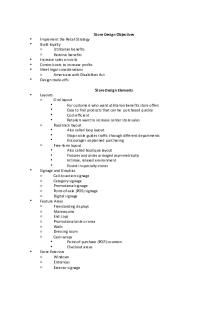Chapter 16 Notes PDF

| Title | Chapter 16 Notes |
|---|---|
| Course | Organic Chem Ii |
| Institution | Portland State University |
| Pages | 3 |
| File Size | 135.2 KB |
| File Type | |
| Total Downloads | 81 |
| Total Views | 164 |
Summary
...
Description
Chapter 16 Notes
Ethers, Epoxides, Sulfides
Structure and Properties
C-O-C bond bent bond, slightly polar no H-bonding (low bp), but H-bond acceptor (slightly water-soluble) crown ethers - specific complexing agents for cations
Nomenclature IUPAC: alkoxy- substituent common: alkyl ether diethyl ether = ethyl ether = "ether" cyclic ethers have special names (and lots of different names) o epoxides (3-membered rings) : oxirane, epoxyalkane, alkene oxide o oxetane (4), oxoloane (5), oxane (6) sulfides ( C-S-C bond ) o IUPAC uses alkylthio- substituent o common uses alkyl sulfide disulfides: ( C-S-S-C bond )
Preparations of Ethers Williamson synthesis o SN2 reaction of alkoxide with alkyl halide o alkyl halide should be CH3 or 1° dehydration of alcohols o for symmetrical ethers only, best with CH3 or 1° Preparations of Sulfides Williamson synthesis with thiolate anion + alkyl halide double displacement with Na2S and alkyl halide (symmetrical sulfides only)
Reactions of Ethers generally unreactive towards oxidation, reduction, base, and most acids (make good solvents) EXCEPT for cleavage by conc. HI or HBr R-O-R + 2 HX ---> 2 R-X + H2O reaction is either SN1 or SN2 (or both), depending on the R groups radical autoxidation to form hydroperoxides Reactions of Sulfides similar to ethers except S is a better nucleophile and leaving group and S is easily oxidized sulfoxide ( S=O bond ) , sulfone ( two S=O bonds ) sulfonium ions (trivalent S+) Preparations of Epoxides oxidation of alkenes by peroxyacids internal SN2 in halohydrins
Reactions of Epoxides unlike most other ethers, epoxides are reactive, because of ring strain acid-catalyzed ring opening o protonation makes ring opening easier o always backside attack by nucleophile (like SN2) o but nucleophile attacks more substituted carbon (like SN1) nucleophilic ring opening o direct attack without protonation requires a strong nucleophile o backside attack on less-hindered carbon (like SN2)...
Similar Free PDFs

Chapter 16 - Lecture notes 16
- 11 Pages

Chapter 16 - notes
- 11 Pages

Chapter 16 Smartbook Notes
- 9 Pages

Chapter 16 Notes - Therapies
- 6 Pages

Lecture notes chapter 16
- 16 Pages

Chapter 16 Notes
- 3 Pages

Chapter 16 Lecture Notes
- 26 Pages

Chapter 16 Notes #2
- 4 Pages

Chapter 16 Lecture Notes
- 29 Pages

Chapter 16 Psychology Notes
- 18 Pages

Chapter 16 - Lecture notes 10
- 5 Pages

AP Gov- Chapter 16 Notes
- 11 Pages

Chapter 15-16 Notes - Roberson
- 10 Pages
Popular Institutions
- Tinajero National High School - Annex
- Politeknik Caltex Riau
- Yokohama City University
- SGT University
- University of Al-Qadisiyah
- Divine Word College of Vigan
- Techniek College Rotterdam
- Universidade de Santiago
- Universiti Teknologi MARA Cawangan Johor Kampus Pasir Gudang
- Poltekkes Kemenkes Yogyakarta
- Baguio City National High School
- Colegio san marcos
- preparatoria uno
- Centro de Bachillerato Tecnológico Industrial y de Servicios No. 107
- Dalian Maritime University
- Quang Trung Secondary School
- Colegio Tecnológico en Informática
- Corporación Regional de Educación Superior
- Grupo CEDVA
- Dar Al Uloom University
- Centro de Estudios Preuniversitarios de la Universidad Nacional de Ingeniería
- 上智大学
- Aakash International School, Nuna Majara
- San Felipe Neri Catholic School
- Kang Chiao International School - New Taipei City
- Misamis Occidental National High School
- Institución Educativa Escuela Normal Juan Ladrilleros
- Kolehiyo ng Pantukan
- Batanes State College
- Instituto Continental
- Sekolah Menengah Kejuruan Kesehatan Kaltara (Tarakan)
- Colegio de La Inmaculada Concepcion - Cebu


